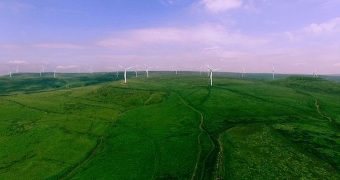
A report released recently by the Australian Wind Alliance has provided some fascinating insights about the economic benefits produced by Australian wind farms. Their construction has resulted in an almost $4 billion contribution to the Australia economy. Over half of this value was generated in the last 5 years.
The wind farms currently under construction there are adding $1.6 billion in economic activity to the regional economy. For example, over 6,000 jobs have been created by the new construction.
If you add the value contributed by the existing wind farms over their 25-year life spans and that of the ones under construction, the estimated total contribution to host communities is $10.5 billion.
About $20 million a year is directed to regional communities via distributions to landholders who host wind farms and Community Enhancement Funds (CEFs). When the wind farms under construction are completed, that figure could increase to $30 million.
From 2019, $2.5 million will be available for community projects through CEFs, which are grants that can be used for them. If all the wind power projects in development are completed, about $7 million a year could be available for community projects.
CEFs are not entirely new, “Fourteen years after the first CEF, more than 40 CEFs across five states have delivered more than $6 million into projects, events, equipment and organisations around Australia.” (Report link.)
Benefit sharing mechanisms can provide support to regional communities. Generally, this support takes the form of community co-ownership and payments to landholders and communities.
We might not think in general that wind power gives back to local communities, but the report described some specific community-enhancing efforts “Projects that have been realised through CEF funding can be substantial, such as the $100,000 contribution towards upgrading IT and educational equipment in schools in WA through to the $1,000 granted for a playground project in NSW.”
Wind power critics sometimes try to bash this form of clean energy as being too expensive, but in this particular case we easily can see the wind power can provide economic benefits at the local level. Also, wind power isn’t free, but it’s generally the cheapest or second cheapest (behind solar) option for new power capacity.
Source: cleantechnica.com


